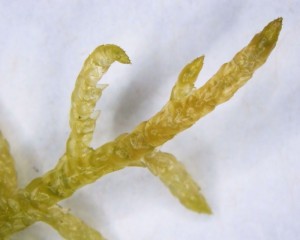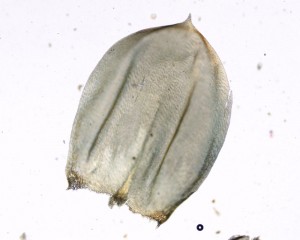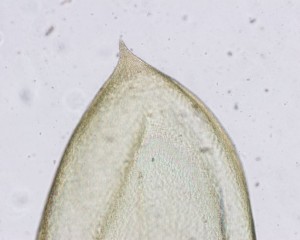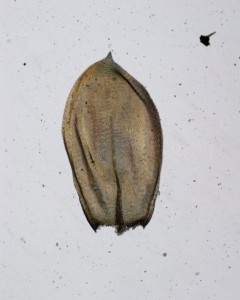Habitat
This species tends to occur in a wide range of habitats, however they are commonly found in acidic grasslands, along roadsides and even in constantly maintained lawns, suggesting that they are well established in areas of high disturbance. They have been observed growing in open woodland but not in areas that are deeply shaded.
Gametophyte
Overall structure:
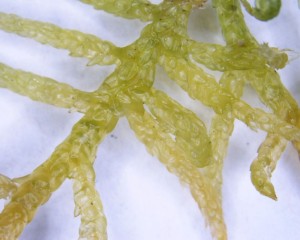 This is a fairly easy moss to recognize, owing in large part to the combination of its pale yellow-green, julaceous shoots that are invariably regularly pinnately branched.
This is a fairly easy moss to recognize, owing in large part to the combination of its pale yellow-green, julaceous shoots that are invariably regularly pinnately branched.
The shoots of Pseudoscleropodium purum have a characteristically swollen or tumid appearance, especially when moist. The generic name Pseudoscleropodium aptly reflects this species resemblance to members of the genus Scleropodium with which its shares this aforementioned character.
shoot tip, moist: note the recurvature of the leaf tips
Leaves:
Both stem and branch leaves are broadly-ovate to obovate, strongly concave, with an abrupt short point or apiculus at their tips.
Leaves have a single costa that usually extends to about mid-leaf. Stem leaves are somewhat larger than branch leaves.
stem leaf apex
branch leaf
leaf cells are very long and narrow, varying in shape from linear to vermicular.
Sporophyte:
Sporangium:
Seta:
The seta is relatively long, ranging between 2-5 cm, and is smooth.

